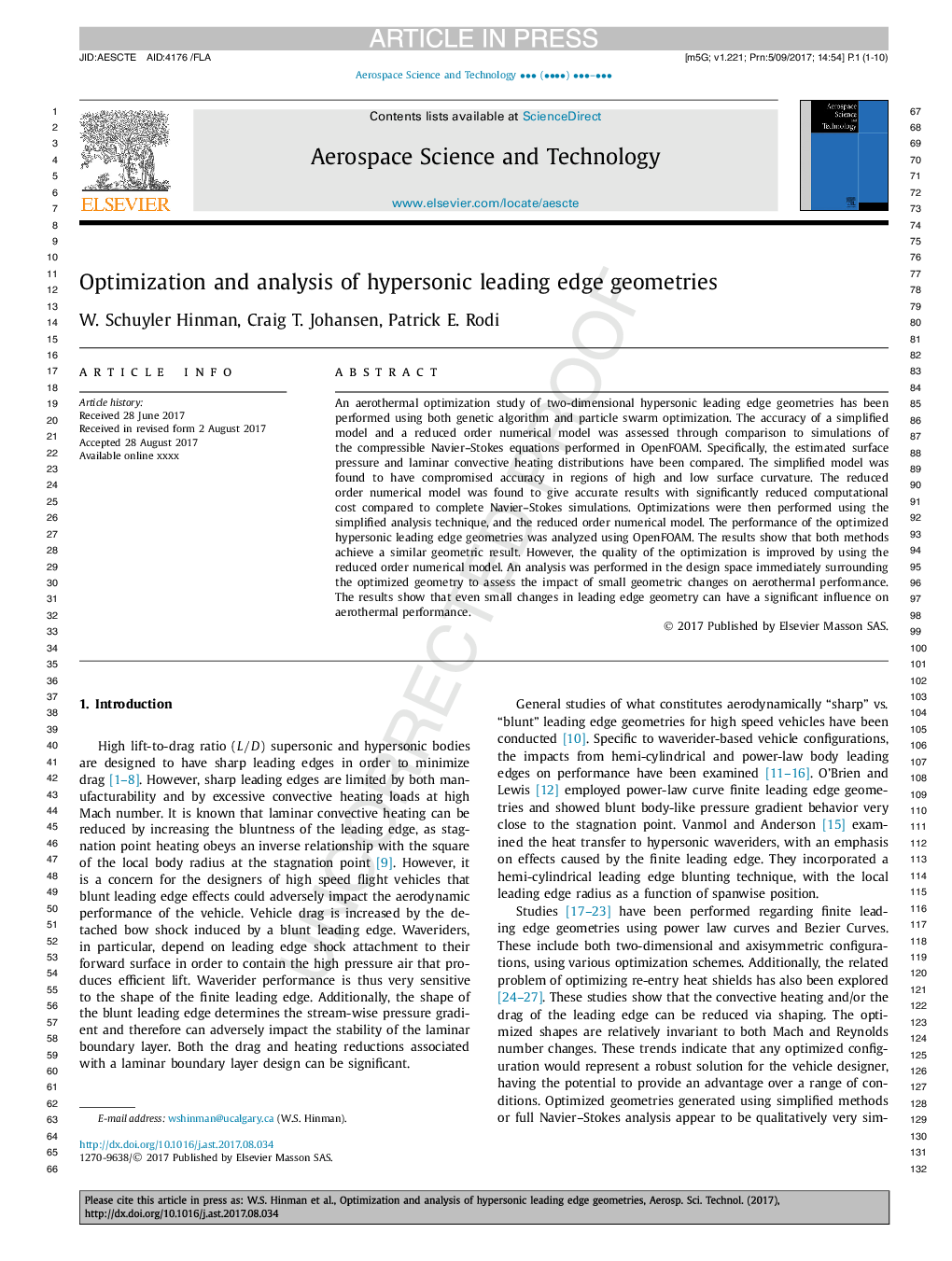| Article ID | Journal | Published Year | Pages | File Type |
|---|---|---|---|---|
| 5472634 | Aerospace Science and Technology | 2017 | 10 Pages |
Abstract
An aerothermal optimization study of two-dimensional hypersonic leading edge geometries has been performed using both genetic algorithm and particle swarm optimization. The accuracy of a simplified model and a reduced order numerical model was assessed through comparison to simulations of the compressible Navier-Stokes equations performed in OpenFOAM. Specifically, the estimated surface pressure and laminar convective heating distributions have been compared. The simplified model was found to have compromised accuracy in regions of high and low surface curvature. The reduced order numerical model was found to give accurate results with significantly reduced computational cost compared to complete Navier-Stokes simulations. Optimizations were then performed using the simplified analysis technique, and the reduced order numerical model. The performance of the optimized hypersonic leading edge geometries was analyzed using OpenFOAM. The results show that both methods achieve a similar geometric result. However, the quality of the optimization is improved by using the reduced order numerical model. An analysis was performed in the design space immediately surrounding the optimized geometry to assess the impact of small geometric changes on aerothermal performance. The results show that even small changes in leading edge geometry can have a significant influence on aerothermal performance.
Related Topics
Physical Sciences and Engineering
Engineering
Aerospace Engineering
Authors
W. Schuyler Hinman, Craig T. Johansen, Patrick E. Rodi,
